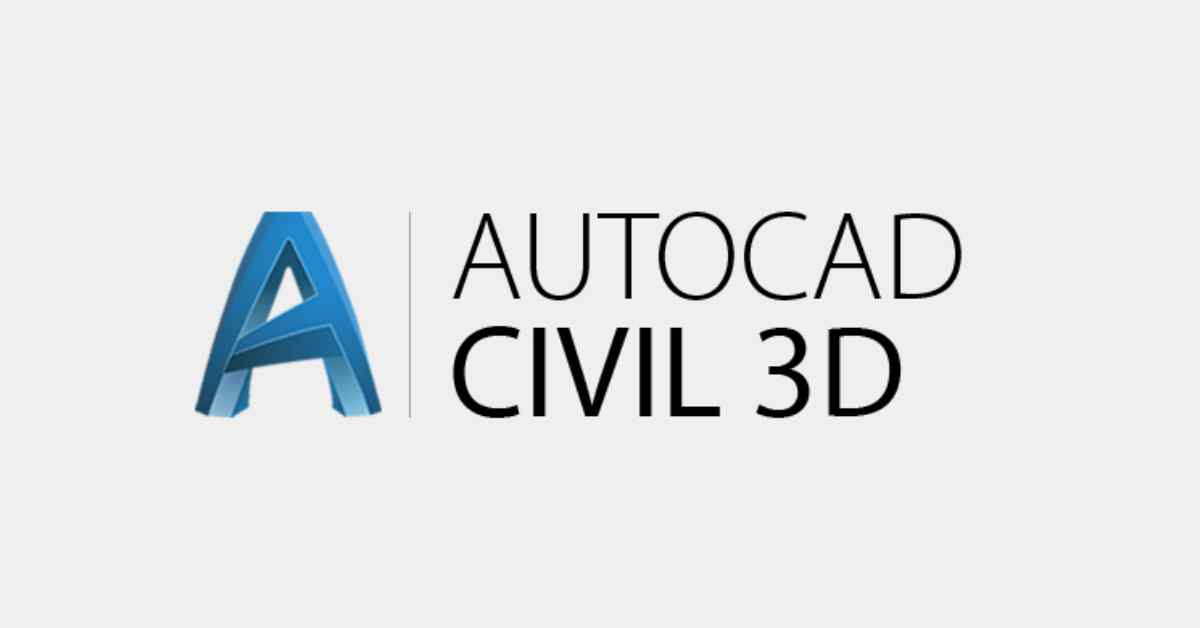Top 5 Civil Engineering Software for Civil Engineers [2026]

The world of civil engineering is no longer simply about blueprints and buildings. In today's digital world, lines of code and complicated software models shape the future of cities, bridges, and landscapes. However, with various civil engineering software applications, selecting the correct tools is an important thing. This blog guides you through the top five civil engineering software in 2026, allowing civil engineers to use the full potential of the software in the project and helping civil engineering students choose the right software courses for civil engineering.
Top Five Civil Engineering Software for Civil Engineers
Civil engineers are in charge of developing and constructing the infrastructure that keeps the world moving. Civil engineers are important for the construction of buildings, bridges, roads, dams, etc in modern society. Software for civil engineering has grown in importance as a tool for civil engineers in recent years. Many software are renowned as essential software for civil engineers. Engineers can use these software programs for several activities, such as design, analysis, and building. Here are the top five civil engineering software applications that will be necessary for 2026:
• AutoCAD Civil 3D
• Bentley MicroStation
• STAAD Pro
• Revit
• ETABS
1. AutoCAD Civil 3D
For years, AutoCAD Civil 3D has stood top as the go-to software for civil engineers working on complex infrastructure projects, because of its continuous development and constant commitment to helping civil engineers effectively overcome difficult obstacles, its dominance in 2026 has been predicted to rise more.

AutoCAD Civil 3D has been an essential component design software for civil engineers for more than 20 years. Its strong features like an easy-to-use interface and smooth connection with the larger Autodesk ecosystem have strengthened its position as the industry standard. It is recognized as one of the best and most used CAD software for civil engineering.
Strengths:
The following are some important strengths and weaknesses of AutoCAD Civil 3D:
• Automation: By handling routine processes like creating profiles and cross-sections automatically, civil engineers and analysts can dedicate more time to important tasks like design and analysis.
• Parametric Objects: Construct intelligent infrastructure, such as pipes and roadways, that can adjust to changes to reduce rework and maintain consistency.
• 3D Visualization: Use realistic 3D models to immerse yourself in your project, promoting improved communication and decision-making.
• Smooth Integration: Promote smooth cooperation between professions by integrating with other Autodesk products like Revit and AutoCAD easily.
Weakness:
• Learning Curve: If you're not familiar with the AutoCAD platform, it will take some time to completely understand the features of Civil 3D.
• Cost: Purchasing the software from the start and paying for future updates can add up, especially for smaller businesses or individual engineers.
• Customization: While Civil 3D's customization options are flexible, they may not be as thorough as some specialized software for specific specialities.
2. Bentley MicroStation
Bentley MicroStation is a BIM (Building Information Modelling) civil engineering design software that has the potential to change the way civil engineers approach their projects. With its unique combination of parametric modelling, reality capture integration, and collaborative features, this powerful software goes beyond traditional 3D modelling and enables civil engineers to plan, evaluate, and manage large projects with unparalleled levels of efficiency and precision. Bentley MicroStation stands out as a shining example of creativity, offering civil engineers a complete toolkit for achieving their ideas.
Strengths:
• 3D Modelling Prowess: Civil Engineers can generate incredibly realistic and detailed models for visualization and analysis because of their industry-leading 3D modelling capabilities.
• Land Development Mastery: MicroStation is the tool of choice for land development projects because of its strong and user-friendly tools for terrain modelling, grading, and drainage design.
• Openness and Interoperability: MicroStation is open and functional with various systems. It enables easy collaboration and data sharing by integrating with Autodesk products like AutoCAD and Revit as well as other Bentley tools like OpenRoads and SACS.
Weakness:
• Performance Issues: MicroStation can be expensive at times and lag or slow down on complicated models, especially on older systems, despite its remarkable 3D modelling capabilities.
• Learning Curve: Its feature-rich interface could be troubling to new users, having a steeper learning curve than some simpler tools.
3. STAAD Pro
STAAD Pro is a seasoned pro in the field of structural analysis and continues to be essential software for civil engineers in 2026. This software is known for its accuracy, code compliance tools, and powerful analytical capabilities, and is the go-to civil engineering software when dealing with the complex area of structural integrity.

STAAD Pro is a powerful software used in civil engineering for structural analysis since it can do comprehensive simulations of real-world situations and improve solutions for both safety and efficiency.
Strengths:
• Code Compliance: STAAD Pro fits with local codes by integrating with many national and international building codes.
• Dynamic Analysis: STAAD Pro is robust to earthquakes, wind gusts, and other dynamic forces. With the help of its sophisticated analysis tools, you can create designs that are more resilient by understanding how your structure will respond to these dynamic strains.
• Visualization Powerhouse: STAAD Pro's robust visualization features enable you to view your analysis's insights in breathtaking three dimensions, which facilitates the understanding and explanation of complicated structural behaviour.
Weaknesses:
• Design Focus: STAAD Pro is best at analysis, but its main goal is to understand structural behaviour. Civil engineers require extra software or tools if they require full-featured design capabilities.
• Limited Non-linear Analysis: STAAD Pro's capabilities can be restricted for complicated structures with non-linear material properties or behaviour. In certain situations, specialized non-linear analysis software might be needed.
4. Revit
The field of civil engineering is seeing a growing impact from Revit. This BIM (Building Information Modelling) software provides an unusual combination of 3D modelling, collision detection, and sustainability analysis, helping civil engineers to plan, build, and manage infrastructure projects with unmatched efficiency and precision. Revit is more than just a design software for civil engineers; it builds intelligent, purpose-driven virtual buildings brick by digital brick.
Strengths:
• Construction Design Specialist: Revit has been specifically designed for building design, ranging from small single-family houses to huge skyscrapers. Even the most complex structures may be easily modelled in great detail and accuracy because of its user-friendly interface and object-oriented workflow.
• Hero for Clash Detection: The outstanding clash detection features in Revit help civil engineers save a ton of time, money, and problems when building.
• Sustainability Advocate: Design with the future in mind. By integrating Revit with sustainability analysis tools, civil engineers can minimize the environmental impact and maximize the energy efficiency of the building.
Weaknesses:
• 3D Modelling for Infrastructure: In Revit's object-centric system, modelling roads, bridges, and other linear infrastructure features might be less intuitive, requiring more work and possibly specialized add-ons.
• Learning Curve: Compared to more straightforward CAD software, Revit's BIM details may require a more challenging learning curve to master. To realize its full potential, resources and dedicated training are necessary.
5. ETABS
ETABS remains an unnoticed software for civil engineers in the structural analysis field, even when more excessive software takes the show with its BIM features. This reliable software, created by CSI, remains a valuable tool in civil engineer's toolbox in 2026 because of its continuous focus on accurate and effective structural analysis. ETABS is a powerful tool for structural integrity verification and number crunching in civil engineering design software, even if it doesn't include fancy 3D modelling or clash-detecting systems.

Strengths:
• Accuracy & Efficiency: ETABS maintains computational effectiveness while producing precise outcomes. Its fast and efficient algorithms evaluate complicated models, sparing critical time without sacrificing the accuracy of the research.
• Code Compliance: By integrating with several national and international codes, ETABS makes sure your designs fit regional laws.
• Visualization Power: Civil engineers can see the findings of the analysis in beautiful 3D because of ETABS's sophisticated visualization features, which make it simpler to understand and clarify complicated structural behaviour.
Weaknesses:
• Not Ideal for Infrastructure: While ETABS can manage specific elements of bridges and other infrastructure, it is not made for these kinds of projects and can take more work than programs like Bentley MicroStation.
• Limited Design Capabilities: ETABS excels at analysis, but its main goal is to understand the behaviour of structures. Civil engineers could use additional software or tools if they require full-fledged design skills.
Conclusion:
As the market for civil engineering software continues to grow, giving civil engineers powerful tools for increasing creativity and productivity. These software solutions help civil engineers realize their projects with efficiency, accuracy, and collaborative prowess, and they become essential support as the industry adapts to new difficulties and complexities. Civil engineers will be able to navigate the future of their profession with confidence and creativity if they embrace these technological innovations.
FAQ
Q: Where can I learn more about civil engineering software?
A: Explore the online platforms that offer software courses for civil engineering. Several training institutes provide software courses for civil engineering to civil engineers and civil engineering students. Additionally, official tutorials from software providers like Autodesk and Bentley offer valuable resources for learning.
Q: What are the benefits of using civil engineering software?
A: Civil engineering softwares offers a wide range of benefits to civil engineers, like:
• Increase efficiency and productivity
• Improve Collaboration
• Reduce errors and reworking
• Improve design quality and more.
Q: What are the different types of civil engineering software?
A: Many kinds of software are used in civil engineering, each with a unique speciality. Some of the most common types are as follows:
• CAD (Computer-Aided-Design) Software for Civil Engineering
• BIM (Building Information Modelling) Software
• Structural Analysis Software
• Geotechnical Software and Transportation Engineering Software
Q: What is the list of CAD software for civil engineering?
A: In addition to Bentley MicroStation, Tekla Structures, and AutoCAD Civil 3D, some other notable CAD software for civil engineering are Autodesk InfraWorks and Dassault Systèmes, CATIA, and more.
Q: What are the factors to consider when choosing civil engineering software?
A: When choosing civil engineering software, consider the following factors:
• Particular project needs
• Project Budget
• Skill Level
• Easy to Collaborate
These factors help to choose the right software for civil engineers to work.
Q: Can these software options be integrated with other tools commonly used in civil engineering projects?
A: Yes, the top civil engineering software is made that integrates seamlessly with other tools. This promotes connectivity and gives civil engineers access to a wider range of features.


